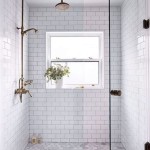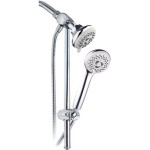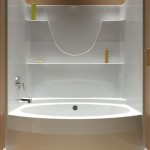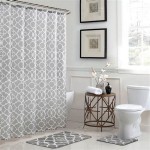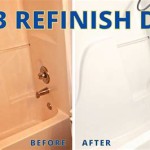Designing a Tile Bathroom Shower Area: Essential Considerations
Transforming your bathroom into an inviting and functional space requires careful planning, especially when it comes to designing the shower area. Tiles are a popular choice for shower walls and floors due to their durability, ease of maintenance, and aesthetic versatility.
1. Tile Material
The choice of tile material is crucial for both durability and aesthetics. Ceramic and porcelain tiles are widely used for showers, offering various colors, patterns, and finishes. Natural stone tiles, such as marble or travertine, provide a luxurious touch but require more maintenance.
2. Tile Size and Shape
The size and shape of the tiles can influence the overall look and functionality of the shower. Smaller tiles create a classic and detailed look, while larger tiles offer a more modern and seamless appearance. Consider the area of the shower to determine the appropriate tile size.
3. Grout Lines
The width and color of grout lines between tiles can subtly impact the shower's aesthetics. Narrow grout lines create a sleek and contemporary look, while wider grout lines lend a more rustic or traditional feel. Choose a grout color that complements the tiles and prevents staining.
4. Shower Pan or Slope
Proper drainage is essential for a functional shower. A preformed shower pan or a tiled floor with a slope directs water towards the drain, preventing pooling. Ensure the slope is gradual and meets building codes for drainage.
5. Wall Heights and Niches
Consider the height of the shower walls and whether you need any built-in niches for storage. Standard shower wall heights range from 72 to 84 inches. Niches can provide convenient storage for toiletries and add a touch of design to the shower area.
6. Shower Head and Controls
The location and type of shower head can significantly enhance the shower experience. Choose a shower head that aligns with your height and water flow preferences. Consider a rainfall shower head for a luxurious spa-like feel or a handheld shower head for convenience.
7. Lighting
Proper lighting is crucial for illuminating the shower and creating a pleasant atmosphere. Install recessed lighting fixtures or wall-mounted sconces to provide adequate illumination. Dimmable lighting allows you to adjust the brightness to create different moods.
8. Accessories
Complement the tiled shower with accessories such as towel bars, robe hooks, and soap dishes. Choose accessories that match the style of the tiles and provide functionality. Glass or metal accessories can add a touch of elegance to the shower area.
Conclusion
Designing a tile bathroom shower area involves balancing style and functionality. By considering the aspects discussed above, you can create a durable, aesthetically pleasing, and enjoyable shower that meets your needs. Whether you prefer a classic or modern look, tiles offer a wide range of options to transform your bathroom into a relaxing sanctuary.

Bathroom Tile Ideas Flooring Backsplash Shower Designs

Discover 68 Creative Bathroom Shower Tile Ideas In 2024 Best Tiles Designs Patterned

Shower Tiles Bathroom Tile Ideas Westside Stone

Bathroom Shower Tile Ideas

33 Shower Tile Ideas To Inspire A Dream Bathroom Architectural Digest

44 Modern Shower Tile Ideas And Designs 2024 Edition Bathroom

30 Small Bathroom Shower Tile Ideas Best Tips For 2024

8 Unique Shower Design Ideas For Your Bathroom Designcafe
9 Stunning Shower Tile Ideas For A Standout Bathroom

33 Shower Tile Ideas To Inspire A Dream Bathroom Architectural Digest
Related Posts


